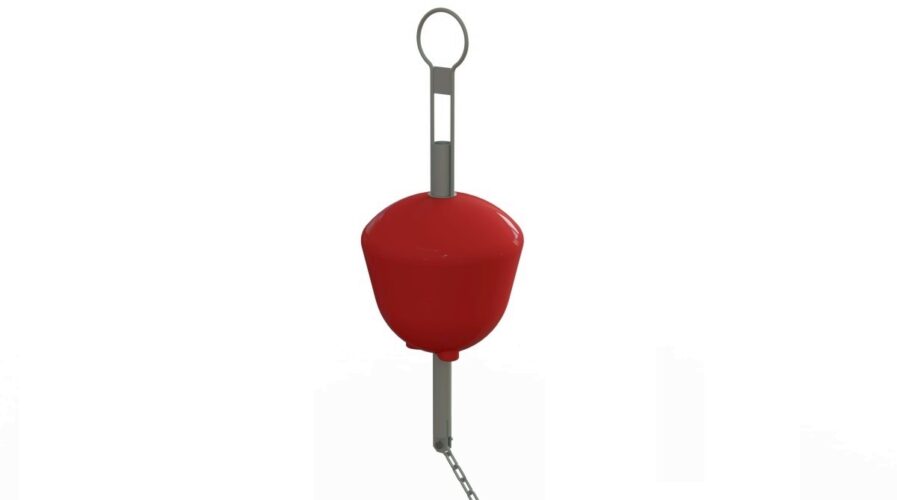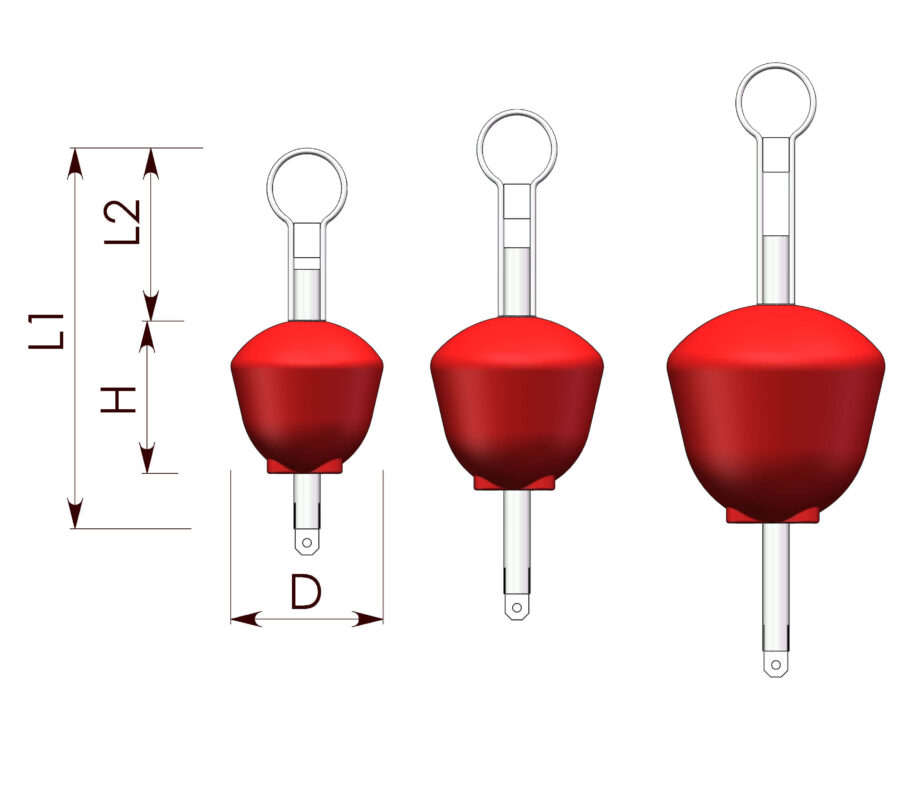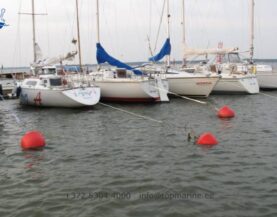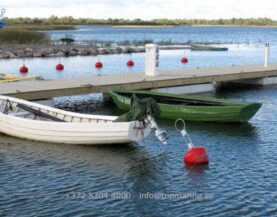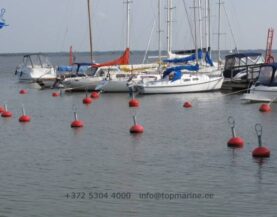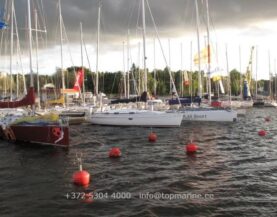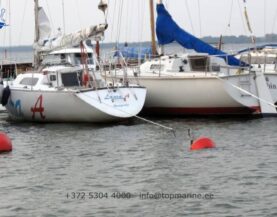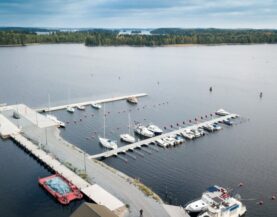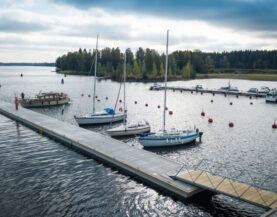Our mooring buoys are robust, easy to handle, maintenance‑free, and resistant to both UV light and freezing conditions.
A mooring buoy consists of a hot‑dip galvanised metal rod and an EPS‑foam‑filled plastic float. In addition, we use a unique inner‑tube system – unlike anything else in the world – that greatly enhances durability.
In standard buoys, water can enter the float over time, and the EPS foam may absorb up to 5% of that water, reducing buoyancy. Our inner‑tube technology prevents water from reaching the EPS core, ensuring the buoy maintains its performance and reliability for many years.
We supply buoys in three sizes: 40 L, 60 L, and 120 L.
- Want to play through your boat harbor vision and find out the initial cost right away? Try our web application. The user manual can be found here.
- Are you active in the field of port design? Here you can download models of mooring buoys as well as all our other products. The ProdLib guide is here.
How to choose mooring buoy?
When selecting the correct mooring buoy size, consider the following factors (see also the table below):
Anchor weight depends on: 1) the vessel’s displacement, 2) its sail area, and 3) the seabed conditions.
Stern chain length (E) is calculated as: maximum water depth + 1 m. For open‑sea mooring buoys, the chain length should be three times the water depth.
Chain size should match the vessel’s weight. The shackle size must always be one size larger than the chain. Shackle bolts should be locked and checked every spring.

| Sailing yacht dimensions | Anchoring kit | |||||
| Length | Width | Weight | Mooring buoy | Anchor | Chain/shackle | |
| 15 | 4,6 | 2,0 | 1,0 | 40 | 500 | 10/13 |
| 20 | 6,1 | 2,4 | 2,0 | 40 | 500 | 13/16 |
| 25 | 7,6 | 2,8 | 3,3 | 60 | 500 | 13/16 |
| 30 | 9,1 | 3,2 | 4,8 | 60 | 1000 | 16/20 |
| 35 | 10,7 | 3,6 | 6,5 | 120 | 1000 | 16/20 |
| 40 | 12,2 | 4,0 | 8,5 | 120 | 1000 | 16/20 |
| 45 | 13,7 | 4,4 | 10,8 | 120 | 2000 | 20/22 |

